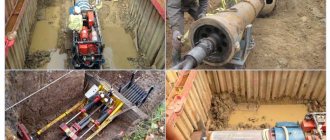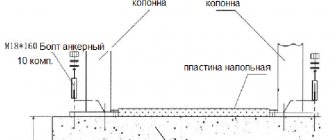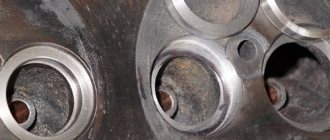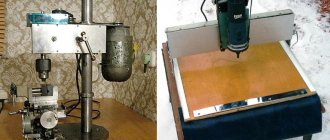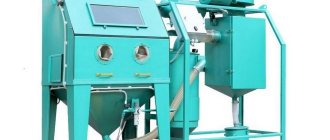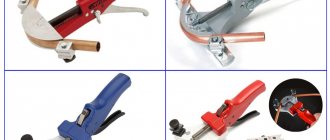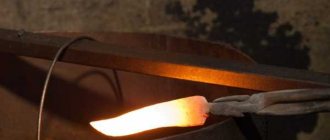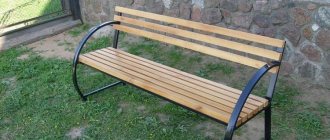It is not uncommon for an obstacle to arise in the way of communications laid underground. For example, a railway, a highway, a lake or some other objects that cannot be bypassed. In these situations, laying pipes under the road using the puncture method - the trenchless method - helps out. It allows you to work with different types of soil, including hard ones (for example, rock).
Puncture under the road using the HDD method is usually done when there is a need to make a long well (more than 50 m) and the pipe diameter is more than 600 mm.
Cost of HDD
| Pipe diameter | Price up to 500 m | Price over 500 m |
| 63 mm | 1,000 rub/m | 900 rub/m |
| 110 mm | 1,800 rub/m | 1,500 rub/m |
| 160 mm | 2,000 rub/m | 1,800 rub/m |
| 225 mm | 3,000 rub/m | 2,500 rub/m |
| 315 mm | 4,500 rub/m | 4,000 rub/m |
| 450 mm | 6,000 rub/m | 5,500 rub/m |
Prices are indicated in rubles for installation of one meter of pipe, including 20% VAT.
The price includes: digging pits, drilling, welding pipes, installing a thread or embedded cable, caulking holes, backfilling pits, as-built documentation for punctures.
How to make a puncture yourself
In domestic conditions, if it is necessary to lay an underground water supply or small-diameter gas line into a house over a short distance, industrial penetration techniques can be used.
One of the effective types is hydropuncture of a hole in the ground; to carry out the following work proceed as follows:
- Take metal pipes of the required diameter of 1 m (a large pipe length will require too large a work area) for the entire length of the hole and cut threads on them from one end, and weld couplings with internal threads of the same cross-section and pitch to the other.
- To supply water, a submersible or surface electric pump is used using an adapter coupling, one end of which is attached to the pipe end, and the output pipe of the pump unit is connected to the other.
- Dig a hole in the ground of the required depth and length, allowing you to conveniently place a steel meter of pipe in it for pushing.
Rice. 8 Do-it-yourself hydraulic piercing - equipment
- They calculate the well's trajectory in advance, connect the pipe to an electric pump, supply water and begin to push it into the ground, controlling the direction and vertical deviation using the building level.
- After deepening the first pipe, turn off the electric pump, disconnect its pipe and screw the second pipe onto the thread, connecting the electric pump from the other end and supplying water to it.
- The operation is repeated periodically until the channel is completely passed to the required length; upon completion of the work, the pipeline is removed and dismantled.
- A HDPE water pipe is inserted into the canal, taken to the desired location, and the work is considered complete.
To vertically lay a shaft in a house, a homemade drill is used, the length of which also depends on the depth of the line; it is turned using a drill or hammer drill.
Homemade drilling devices can also be used for horizontal drilling at home, while the drill is rotated using a power tool, lengthening it with metal rods with a threaded connection.
Rice. 9 DIY horizontal drilling
Trenchless pipeline laying is an effective method for solving problems in cases where digging trenches is impossible or economically infeasible. When carrying out work, a wide range of industrial methods are used using special equipment; some technologies can be successfully used in everyday life.
The essence and advantages of HDD puncture technology
Laying utility networks by HDD puncture under the road consists of drilling a pilot well followed by back drilling with an expander to obtain a drilling channel of the designed diameter. A pipeline is then connected to the expander and pulled through the well.
Pipelines under roads of any category must be laid in a protective case. The process is controlled using an electronic location system. The curvature of the well trajectory is limited only by the permissible bending angle of the drill rods.
Advantages of the technology:
- work is carried out without digging and backfilling trenches, regardless of weather conditions or time of year;
- there is no destruction of the road surface with the embankment, adjacent sidewalks, or pedestrian paths;
- damage to the surrounding landscape and landscaped areas in cities, cottage villages, and dacha communities is minimized;
- does not interfere with the movement of cars, passenger transport, or pedestrians, which is especially important in areas with difficult road conditions or in cramped urban conditions;
- the duration of work, the number of involved equipment and labor, and financial costs are reduced;
- soil does not accumulate on the surface in large quantities;
- puncture length up to 800 m, diameter up to 1,000 mm.
When HDD punctures under the road, due to reverse excavation, strengthening bentonite solution is not used, because The canal walls are held in place by compaction. With the help of HDD it is possible not only to lay, but also to replace old pipes.
Types of punctures
Laying pipes underground is done in several ways. A specific solution is chosen based on the type of pipeline, type of soil, and landscape features.
HDD
The maximum puncture length in this case is 650 m. Diameter is 1000 mm. The hole is expanded in stages, and the soil is removed from the well using a special device - a suction pump. To strengthen the walls of the well, bentonite solution is used. To control the rock cutting tool, a location system is used.
Auger method
This method is used when laying pipes made of polyethylene and steel. The advantages of the method are high accuracy (deviations do not exceed 30 mm). Auger drilling machines are used in the work. It is possible to lay a pipeline with a diameter of up to 1720 mm and a length of up to 1000 m. The installations are equipped with drilling heads or double-walled rods.
Microtunneling
This method is suitable for laying steel and reinforced concrete pipes. Can be used when working with hard rocks, including rock. The speed of work is up to 15 m per day. To control the work, a laser system with a hydrostatic level is used.
If the length of the well exceeds 200 meters, an additional jacking station will be required.
Work order
- Local exploration . Work begins with determining the soil category and determining the groundwater level.
- Studying the diagrams of utility networks already laid nearby.
- Coordination of work with the traffic police or organizations responsible for the operation of roads.
- Drawing up project documentation . Based on the data obtained, a pipeline route layout is designed. A technical and economic comparison of all factors that subsequently influence the choice of installation is carried out to achieve the optimal result.
They select drilling equipment and tools, the composition of the drilling fluid, and draw up technological maps. The finished project is coordinated with the owners of the territory, existing utility networks, and representatives of the administration. Once the project has been approved, construction of the pipeline begins.
- Preliminary work . Pipes and a drilling rig with associated equipment are delivered to the site. Dig pits or ditches and, if necessary, install drainage.
- Well drilling and expansion . Initially, a pilot well is drilled. The process is controlled by a locator operator using signals from a probe located in the drill head and location. After complete penetration, the head is replaced with a conical or drilling reamer, then the well is drilled back. The process is repeated one or more times as necessary.
All work is carried out in compliance with technological regulations, norms and rules for organizing construction, geodetic work, safety precautions, and fire safety.
- Pipeline pulling . The pipes are welded, the end of the pipeline is connected to the expander and pulled through the well to the starting point of drilling.
- Final works . The laying process ends with caulking the holes, backfilling pits or pits and cleaning the construction site. The soil surface is improved.
Advantages of the method
The popularity and demand for this method of laying water pipes is explained by the following advantages:
- Efficiency of work - compared to digging an open trench, puncturing takes 3-4 times less time.
- Low labor intensity - puncturing does not require significant physical effort and a large number of workers, as is the case with the trench method of laying pipes.
- All-season use - piercing the soil for water supply can be done at any time of the year using various installations.
- Environmentally friendly - this method of laying a pipeline avoids disturbance of the soil structure, damage to tree roots, destruction of natural landscapes, artificial lawns and plantings.
- Low risk of damage to nearby communications (sewerage, communication lines, gas pipelines) - when a puncture occurs, the likelihood of damaging nearby communications is much less than when excavating soil with an excavator or trencher.
- Low cost - even when hiring specialists with special equipment, digging a sewer using the puncture method costs 30-40% less than traditional trenching.
Our offers
has been laying pipelines using the HDD puncture method under roads and other obstacles since 2010. The company has accumulated extensive experience; we have completed over 250 large-scale projects in Moscow and the Moscow region.
We work on our own equipment:
- drilling rig Vermeer Navigator D33×44 (USA), there are rubber linings on the tracks to save asphalt;
- drilling rig Vermeer Navigator D80×100 (USA);
- Japanese mini-excavator Yanmar VIO-20-2 with rubber tracks;
- Nissan Atlas vehicle for transporting tools and equipment.
The company's highly qualified employees will perform HDD on a turnkey basis, including under non-standard conditions. We work with strict adherence to deadlines and provide the customer with all the as-built documentation.
HDD horizontal directional drilling method
There are two types of drilling:
- Separate. With this method, a shaft is first formed with drills, and after removing the tool, a line is drawn.
- Combined. With this type, drilling is carried out together with pipes that are moved along the channel.
Horizontal drilling units (UB, UGB) allow passage with line laying at a speed of up to 19 m per hour with a shaft length of up to 60 m, the range of drilled hole sizes is 325 - 1420 mm, more productive units of this type are capable of laying a line up to 120 m.
Drilling is carried out using knife attachments with rock removal using a screw conveyor; for larger sizes, a small-diameter pilot hole is used. After drilling it, a special expander is installed on the auger and the drilling rig is switched to reverse mode.
Fig.6 Passage using a special tunneling shield (microtunnelling)
Although the forces used during drilling are lower than when piercing, significant disadvantages of the method include the need to transport soil from the drilled well. New laying technologies make it possible to avoid this drawback - the shaft is cut through with propeller-type knives with further rolling of the rock in the annulus.
An effective method for making horizontal shafts is the use of self-propelled pneumatic machines (Mole), which form a channel with dense walls 63 - 400 mm wide. and up to 50 m long.
The device is a self-propelled pneumatic machine of the impact principle with a hammer that carries out translational and return vibrations under the influence of compressed air. Maintaining the accuracy of a given direction is determined by the significant length of the body; the reverse movement is resisted by friction against the earthen walls.
Rice. 7 Directional auger drilling method
Cost of work
The price of the work includes taking out the route in kind by a surveyor, drilling a well, welding and pulling pipes, digging and backfilling pits, caulking holes, blowing construction thread into each pipe, and drawing up as-built documentation. The price also includes VAT 20%. Activities for improvement and restoration of the territory are paid separately.
The cost of work does not depend on the category of soil, the presence of intersections with existing communications, the time of year, or the remoteness of the site. The final price for HDD across the road is calculated after preparing the project and selecting the type (diameter) of pipes.
Cost calculator
m
Total price: 33,000 rub.
Trenchless pipe laying - types and methods
Existing technologies make it possible to lay pipelines at great depths when laying new lines or inside the channels of old pipes, sometimes with their destruction.
Reconstruction and replacement of the pipeline using the sanitation method
Rehabilitation is the method of wiring lines using old communications, and two technologies are distinguished:
- Relainig . This rehabilitation method is used if the old pipeline is preserved and it serves as a shell for a new pipeline, which is pulled inside.
- Renovation. This technique consists in the fact that when laying a new line, the old one is destroyed - it is cut lengthwise with roller or stationary knives and the expander increases the radius of the circumference of the passage channel, pressing the remains of the shell into the ground.
Relining technology
Relining is the most cost-effective method in a situation where an outdated line is replaced with a modern plastic one (low-density polyethylene HDPE) of slightly smaller diameter. The production technology of HDPE pipes allows it to be connected by welding; for this purpose, the industry produces a wide range of devices that carry out leveling processing, heating with a disk iron and welding of the ends. When carrying out pulling work, the length of the HDPE main can reach 700 meters; during the feeding process, pipes (10 - 12 m) are welded on the surface using special expensive electronic units suitable for the dimensions.
Quite often it is necessary to pull a polyethylene line of a slightly larger radius along an old steel pipeline - for this they use pulling technologies with a special expander knife, which is used to cut the pipeline lengthwise. The work carried out consists of the following stages:
- Along the edges of the area to be replaced, working and receiving pits of the required size are dug (depending on the depth of the pipeline and the dimensions of the machines) to accommodate engineering equipment.
- Using a special mechanism of hydraulic jacks, metal rods are twisted and fed into the channel, pushing them until they exit the line in the receiving pit.
- A plastic pipeline is connected to the metal rod through fasteners, which are located on a special tip in the form of an expander knife.
- The hydraulic machine pulls in the opposite direction while simultaneously longitudinally cutting the steel pipe casing. In this case, as they are removed, the rods are untwisted and removed from the pit.
Microtunneling
When implementing this method, the machine must be equipped with a drive. It is located in a special ring with a cutting edge, as well as in the drill head. The auger, located immediately behind the drive, is driven by the pressing unit from the first pit.
To prevent damage to the pipe, a special pipe intended for transportation is inserted inside it. It is also intended to remove soil into the first pit.
Such a system is controlled using a laser and a target. This allows you to achieve precision work even at a distance of up to 100 meters. The deviation in this case is possible no more than 3 centimeters.
Types of power drives in drilling rigs
Drilling rigs use different types of drives. Among them are:
- Devices and units for feeding or rotating tools. These are a variety of rotators and impact mechanisms.
- Equipment that is used for rotary drilling, designed to clean the bottom, as well as cool the tool that destroys the rock. These include mud pumps or pressurized compresses.
- Mechanisms, structures or units designed for extension or lifting. descent of columns. Winches, masts, towers, traveling blocks, crown blocks are used as a power drive.
- Mechanisms and tools for lifting or lowering. These are candle layers and pipe turners.
- Drives for driving mechanisms and machines.
- Devices used to control the drilling process.
Depending on the method of rock destruction, the following types of installations are distinguished:
- rotational;
- rotational-impact;
- drums;
- vibration;
- vibration-rotational.
To carry out geological exploration drilling, a drilling rig and a unit, which consists of a pumping unit and a machine tool, are also used. Instead of a pump, a power-driven compressor can be used.
The process of drilling a well also includes preparing the site for the drilling rig. It requires transportation and installation of equipment, and then its dismantling.
Drilling rigs, depending on the transport and installation base, are divided into mobile, stationary, and self-propelled.
Stationary systems are manufactured under the brand of our company. They do not have a transport base. Move in blocks using vehicles. Their advantage is their compactness, which allows the installation to be quickly delivered to the work site.
But the disadvantage of such installations is the laboriousness of the assembly process. It requires a significant amount of time, especially for Chinese-made systems.
When working in underground conditions or difficult access to the drilling site, the equipment of such installations is dismountable.
Transportation of mobile systems occurs using a transport base. They move by towing. In turn, the transport base can be used on a sled, wheeled or tracked vehicle. Watercraft are also used. The installation is moved in one or several blocks at once, depending on which the installation time varies.
Self-propelled units are mounted on tracked or wheeled vehicles. Their use can significantly reduce the preparation time for drilling. This is especially important when performing a small well size. Self-propelled units are more often used where it is not necessary to open the asphalt.
In order to pump out liquids and sludge that appear during the drilling process, submersible pumping units are used.
After piloting, the well is expanded using a drilling rig using the puncture method. Then pipes for water, gas, and communications are installed.
Auger or drilling rigs are distinguished by a fairly strong torque, as well as significant traction. This allows them to significantly outperform classical HDD complexes.
When performing horizontal directional drilling using soil puncture installations, it is necessary to take into account:
- The drilling rig operator must be aware of the type of soil where the well is being drilled or expanded.
- The solution should not enter or exit the final or initial pit from the inlet holes. The pipe being installed must float in the solution. This is achieved using earthen dams and partitions.
- The drilling rig must be equipped with a special rod device for crushing.
- Bentonite must pass, like HDD, through the washing head.
After pilot drilling in the last pit, an expansion and traction head is attached to the rod. To prevent the tightened pipe from rotating, you need to install a support between the heads.
Bentonite is not used for various types of soil. Before you begin the drilling process and apply the solution, you need to determine the type of soil.
As a rule, bentonite is approved for use in cases where the soil is gravel or sand and there is no groundwater.
To flush holes when puncturing the soil, a new bentonite mixture is not used when the previous one is not completely used up. When carrying out work, it should also be taken into account that the polymer helps prevent swelling of the solution.
If you plan to drill in a well where the bentonite solution must act as a support for the walls, it is first recommended to conduct a test in a bucket with drilling material and rock.
Bentonite supply is calculated using the formula:
The volume of the retracted pipe multiplied by a factor of 1.2 retraction time.
Using the sanitation method for repairing and laying pipelines
Rehabilitation is a closed pipe laying, which involves replacing old elements with new pipe products. There are two ways to perform the process:
Relining
This method involves saving the old system and using it as a capsule for the new pipeline. Before carrying out work, preliminary high-quality cleaning of the pipe from excess debris is required. Then a new pipe element with a smaller diameter is inserted into it. Despite the fact that modern pipes are made from materials with excellent quality characteristics, the old design can act as additional protection, reducing the risk of accidents.
Relining work can be performed in several ways, in particular by retracting the pipe. This process begins at the end of the old communication and before the beginning of the pipe. During the work, the section is disconnected from the general system, then a new element made of more technologically advanced materials is inserted into the pipe being repaired in this section. Relining allows for slight destruction of some sections of the old pipeline.
Choose the appropriate communication method
There are several methods that allow you to lay underground communications: direct puncture, the punching method, tunneling using shields and horizontal directional drilling, etc. The choice of method depends on:
- length of necessary communication,
- puncture diameter,
- nature of the soil (presence of rocks, natural groundwater)
- the nature of the development on your site
- the presence of existing underground communications
- your construction budget
Comparative table of methods for trenchless laying of communications
Please note that the choice of a trenchless pipe laying method depends on the diameter and length of the pipeline, physical and mechanical properties and hydrogeological conditions of the soil being developed and the equipment used. It may be advisable to use a different installation option in your area.
Using a Cable Layer
Before starting work, the trajectory of the cable layer is marked with poles. This technology is adapted for the installation of high-voltage wires. Cable laying machines should not be used in wetlands. The installation for underground installation of wire lines is serviced by 2-3 people. The movement of the cable layer is carried out by 1-2 bulldozers or wheeled tractors. If the work is carried out on country roads, then the damage from the work will be minimal: the road surface will be compacted to its original condition in 2-3 days.
Impossibility of using HDD installations in case of road punctures
The use of simple HDD installations in the absence of sufficient piloting accuracy and the consumption of a large amount of bentonite can cause a collapse and sloughing of the soil.
This can happen when specialists, in order to save bentonite, dilute it with water, which is the main factor in the destruction of various rocks.
That is why it is recommended to carry out the puncture with the help of auger installations or horizontal auger drilling devices. When using these technologies, obtaining permission to puncture the road is much easier.
Percussion drilling
First of all, pilot drilling is carried out from the first pit. After this, the rod is pressed into place with the drill head installed.
In the final pit, the rod is connected to the pipe head to expand the well. They are pulled into the first pit. As a result, the soil is displaced in different directions.
With this drilling method, it is recommended to use installations specially designed for these purposes. But they are used only in those soils that are mobile and can be displaced.
Possible difficulties and problems during installation
Before digging a trench, find the underlying communication networks on the technical documentation drawings of the land plot: gas pipeline, telephone, heating, electrical cables. If there is no such documentation, please contact the administration. They have equipment at their disposal that can find an existing utility network at any depth. This will allow you to avoid damaging another network during the process of digging a trench for the water supply.
If the water supply is from a well on the site, no permitting documents are required. But if you are connecting to an existing network or laying a pipe through a neighbor's property, you will need official permission from the local authorities in writing. Otherwise, you may create an emergency situation, which could lead to legal action. It is necessary to agree with neighbors in advance and obtain approval for excavation work.
The problem may be the soil: hard, soft, waterlogged, rocky or unstable. Laying a water pipeline in such conditions will be more expensive, since additional protection and fastening of the entire system will be required.


